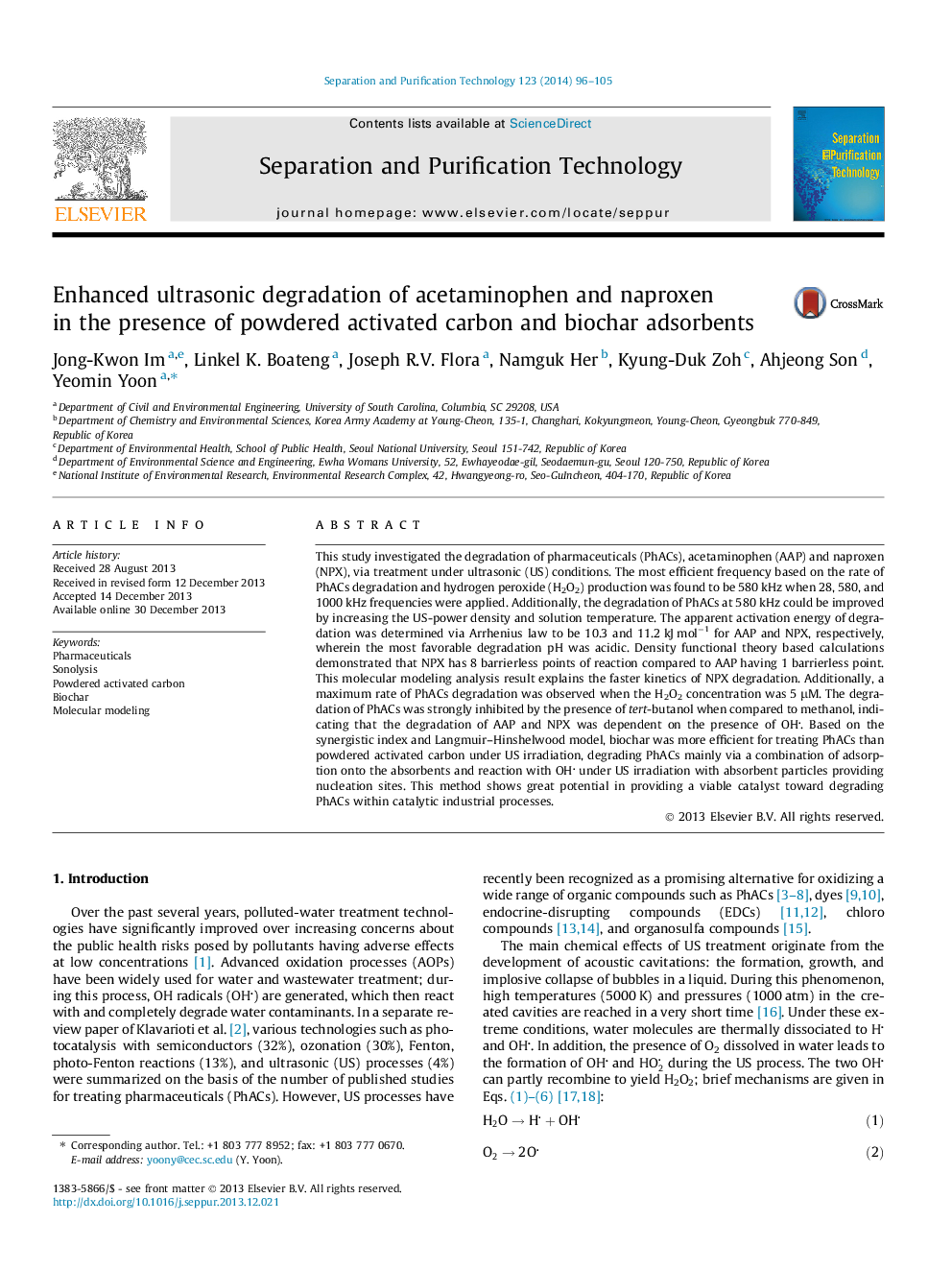| کد مقاله | کد نشریه | سال انتشار | مقاله انگلیسی | نسخه تمام متن |
|---|---|---|---|---|
| 641383 | 1456996 | 2014 | 10 صفحه PDF | دانلود رایگان |
• Sonodegradation of acetaminophen and naproxen was performed.
• Enhanced degradation efficiency of PhACs was observed in US/adsorbent process.
• Molecular modeling was performed using density functional theory.
• Possible mechanisms in US-only and US/adsorbent processes were suggested.
This study investigated the degradation of pharmaceuticals (PhACs), acetaminophen (AAP) and naproxen (NPX), via treatment under ultrasonic (US) conditions. The most efficient frequency based on the rate of PhACs degradation and hydrogen peroxide (H2O2) production was found to be 580 kHz when 28, 580, and 1000 kHz frequencies were applied. Additionally, the degradation of PhACs at 580 kHz could be improved by increasing the US-power density and solution temperature. The apparent activation energy of degradation was determined via Arrhenius law to be 10.3 and 11.2 kJ mol−1 for AAP and NPX, respectively, wherein the most favorable degradation pH was acidic. Density functional theory based calculations demonstrated that NPX has 8 barrierless points of reaction compared to AAP having 1 barrierless point. This molecular modeling analysis result explains the faster kinetics of NPX degradation. Additionally, a maximum rate of PhACs degradation was observed when the H2O2 concentration was 5 μM. The degradation of PhACs was strongly inhibited by the presence of tert-butanol when compared to methanol, indicating that the degradation of AAP and NPX was dependent on the presence of OH. Based on the synergistic index and Langmuir–Hinshelwood model, biochar was more efficient for treating PhACs than powdered activated carbon under US irradiation, degrading PhACs mainly via a combination of adsorption onto the absorbents and reaction with OH under US irradiation with absorbent particles providing nucleation sites. This method shows great potential in providing a viable catalyst toward degrading PhACs within catalytic industrial processes.
Journal: Separation and Purification Technology - Volume 123, 26 February 2014, Pages 96–105
